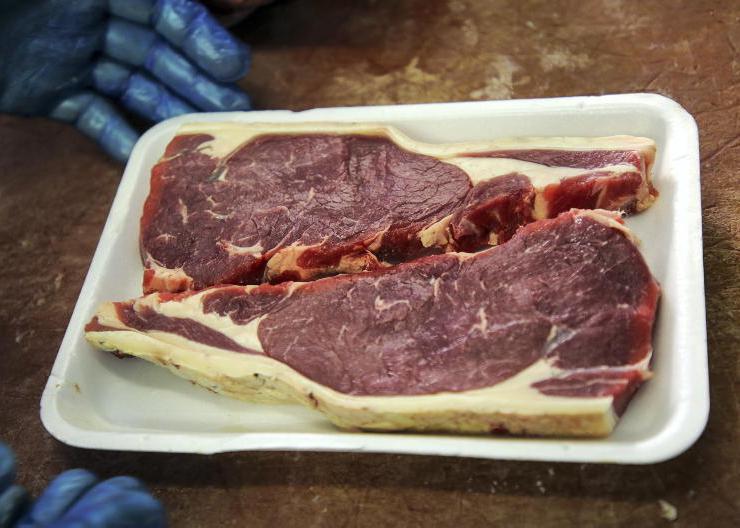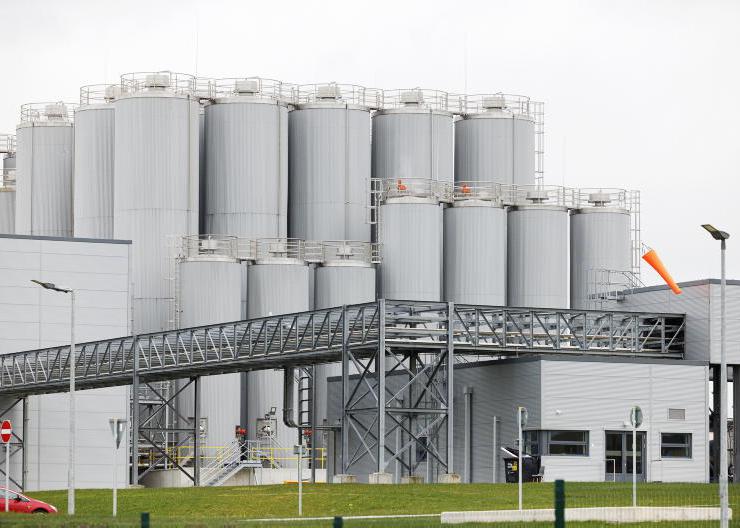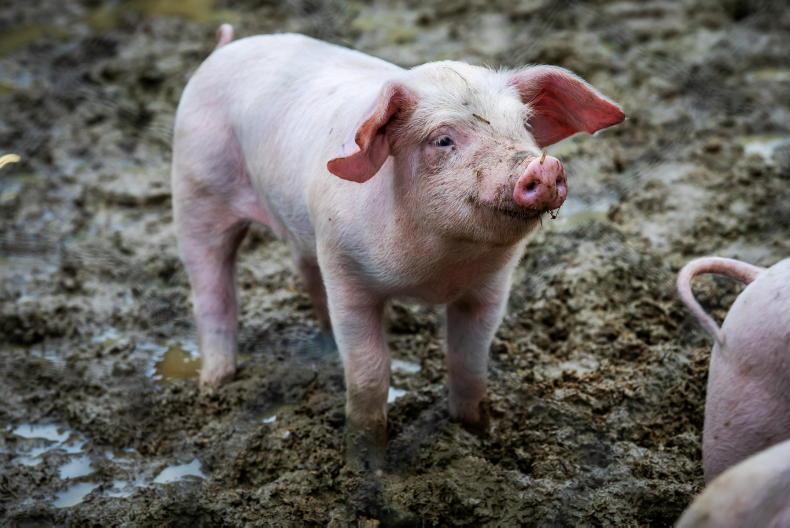The Irish pig sector continues to suffer historic levels of monthly losses. For the first five months of 2022, the average 600-sow unit has lost an estimated €270,000, or an average €54,000 cash loss per month.
The critical issue is the momentous high feed price. While high feed prices are very welcome in the tillage sector, they are ruinous for the pig and poultry sectors, where 65% to 75% of the cost of production is feed. So where is the current feed cost and what’s the outlook for feed and pigmeat over the next 12 months?
When we compare the current feed price to the last few years, it’s not difficult to see what the problem is. The May 2022 feed price was 43% higher than 2021 and 56% ahead of the 2018 to 2020 period.
This higher feed cost has increased the monthly feed bill for an average-sized 600-sow herd by €78,200 (from €129,625 to €207,825). It has also increased the cost of the average feed credit per farm from €453,688 to €727,388, without allowing for any increase in credit days.
This is creating very serious cashflow issues for pig producers and ultimately forcing some of them out of business.
The feed industry is carrying a lot of the extra feed credit burden. Its requirement for extra liquidity has risen exponentially over the last few years, with an extra €43m needed now on an annual basis.
The number of mills producing pig feed is very small (five mills produce about 85% of the total Irish composite pig feed volume). Therefore, this high financial burden is being carried by few players.
So what is the outlook for the pig feed ingredient market comprising wheat, barley, maize and soya? A glib simple answer would be “who knows”? There are so many moving parts, many of which relate to the Ukraine-Russia situation, that it’s a very fluid and rapidly evolving situation.
I believe the three biggest influences on the feed ingredient outlook will be Ukraine, US wheat and maize and French wheat. The supply of wheat, or more specifically a lack of wheat, will largely drive the maize and barley markets. If wheat remains tight and the price differential to maize continues, then greater volumes of maize will be incorporated into animal diets globally.
Ukraine
Sowing in Ukraine has gone relatively well but questions exist over the available manpower, fertiliser and sprays to ensure a good yield. Even if there is a good yield, the expectation is that only 50% of the crop will be able to be exported – and this sounds optimistic due to transport and geography problems.
Ukraine usually transports 55% of its exports by port and 35% by rail with the remainder by road. With its port access completely closed, it’s difficult to see this volume being substituted by road/rail.
The geographical reason is most of the wheat in Ukraine is grown in the southeast of the country, which is at the heart of the conflict, whereas most of the maize is grown in the northern half of the country.
One would therefore be more optimistic that the maize could at a minimum be harvested and then perhaps stored for a few months if it can’t be shipped.
US wheat and maize
The US is in the top five biggest wheat exporters so when the crop is only rated 29% “good – excellent” (47% last year, 55% average) then the world pays attention.
The drought over the winter has continued and the outlook is that the yield will be below the five-year average. How much below remains to be seen.
The US spring wheat planting (25% of total wheat) is too wet and planting is at its slowest pace in 20 years.
Two states in particular are extremely slow. North Dakota had 27% planted last week (compared with 80% normally) and Minnesota has only 11% planted (compared with 90% normally). These two states produce 66% of the US winter wheat crop, so their progress through the growing season will have a big effect on overall US spring wheat output.
Similarly, US maize planting also struggled in the cold wet conditions but hopefully will recover as the year progresses – maize is very important as a wheat substitute in diet formulations.
French wheat
Mirroring the US situation, but not as severe, the French wheat crop is sub-optimal due to dry conditions. The winter and spring wheat crops have both been downgraded this week to ratings in the 60s to reflect these dry conditions. As the largest EU wheat producer and exporter, the progress of the French crop will be watched carefully over the coming months.
These three factors will dictate whether the current composite feed price holds at harvest time or increases. Whatever happens, it is increasingly clear that there will be no return to “normal” feed ingredient prices until the autumn harvest of 2023.
Pig price
Unfortunately, the higher feed costs to date have not been met with a sufficiently high pig price to achieve breakeven. The current May 2022 margin-over-feed (Figure 3) illustrates the lack of margin available to pay for all the other non-feed costs. The average non-feed costs are currently 56c/kg which indicates a loss of 50c/kg. The current pig price of €1.81 to €1.84/kg is still a long way from the total cost/breakeven cost of €2.25/kg.
Irish margin over feed
The large volume of frozen pigmeat in storage in Germany and elsewhere in Europe is limiting the opportunity for the pig price to continue to rise. However, in the coming weeks, this volume/buffer will diminish, allowing a further upward pig price curve.
The Irish pig sector to date (this year alone) has lost an estimated €65m. Therefore, it will require a very significant pig price rise to generate the profit margin necessary to recoup this loss in the coming years. The big positive for the pig price is that the US, EU and Chinese sow herds are in decline and the scarcity of these pigs is going to be felt globally in the second half of the year and throughout 2023.
If the pig price can reach a high plateau then it’ll likely remain at this level for an extended period as the scarcity of pigmeat will reduce the power of retailers to push the price lower.
Profitability outlook
It is critical that the Irish pig price reaches €2.25/kg over the next number of weeks. The longer that the pig price remains below this level, the more pig units will begin the process of permanent destocking/culling.
The current reduction in the national sow herd will reduce the weekly pig kill by 6,660, beginning in the first quarter of 2022. How much further the weekly kill drops will depend on what month we hit breakeven.
The expectation is that the EU price will move significantly higher in the third quarter and return the continental pig producer to profitability.
For our national sow herd and pig sector’s economies of scale to be maintained, we require similar price rise momentum.









SHARING OPTIONS